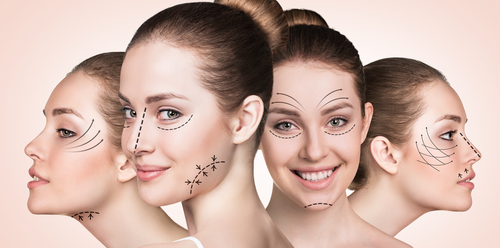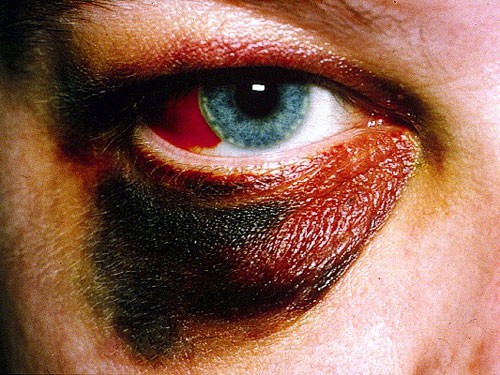Functional and Reconstructive Oculofacial & Orbital Surgery

At Pacific Eye Associates, we provide a wealth of services for patients who need reconstructive surgery for age-related conditions, trauma, cancer, and systemic disease.
Dr. Emily Sarah Charlson MD. PhD. is an expert in eyelid, orbit (eye socket), and tear drainage (lacrimal) surgery including droopy eyelids and eyebrows, eyelid cancer/Mohs reconstruction, eyelid malpositions, thyroid eye disease/decompression, orbital tumors or masses, and tearing due to tear drainage system problems.
Stanford trained, Dr. Charlson is known to implements the latest oculoplastic medical and surgical therapies including PD-1 and Hedgehog pathway inhibitors for orbital carcinoma, corneal neurotization (nerve grafting) to restore corneal sensation, and Teprotumumab for thyroid eye disease treatment.
Dermatochalasis
Dermatochalasis occurs when excess skin and fat forms in the upper and lower eyelids, also known as “baggy eyes”. This condition may be acquired due to age or a congenital condition. While this condition most commonly affects middle-aged adults and the elderly, it may develop as early as 20 years old. The tired appearance caused by droopy upper or lower eyelids is cosmetically undesirable. However, if excess eyelid skin impairs vision, creates ocular irritation or inflammation, and diminishes the quality of life then dermatochalasis may be more than a cosmetic concern. The skin and fat may be removed surgically, often with laser or radiofrequency techniques. This technique is called blepharoplasty. The results of eyelid surgery is long-lasting and involves little pain.
Eyelid Malpositions
Entropion
Eyelids may become unstable with age, as a result, the eyelids may turn inward. Thus directing the eyelashes against the cornea. This condition is called Entropion. Entropion may happen to both the upper and the lower eyelids. However, this condition is more common in the lower eyelid. Entropion can lead to severe corneal scarring and irritation if left untreated. Eyelid tightening can shorten and tighten the lid resulting in a smoother appearance and often provides much relief.
Ectropion
The eyelid can rotate outward as a result of aging, trauma, scarring, or facial paralysis. This condition leaves the cornea exposed and prone to irritation. Typical symptoms include tearing and eye irritation. Ectropion is more common in older adults and generally affects the lower eyelid but in severe ectropion, the entire length of the eyelife turns out. Surgery is a good way to reposition the lid and protect the surface of the eye. Dr. Emily Sarah Charlson MD. PhD. is an expert in reshaping and contouring the eyelids to correct both ectropion and entropion.
Eyelid Retraction
An eyelid retraction occurs if the upper lid is too high or if the lower lid is too low. Improper eyelid retraction may be an anatomic variant or may occur due to thyroid eye disease, trauma or surgery. Corrections of the lower lid retraction can include lower lid tightening, skin graft placement, and spacers. Upper lid retraction correction may be rectified with an incision underneath the lid or on the outside of the lid crease. Dr. Emily Charlson has helped many patients achieve an improved lid height and contour.
Eyelid Lesions and Tumors
Eyelid lesions are very similar to skin tumors except they form on the upper and lower eyelid. They may be benign cysts, inflammations (styes) or skin cancers. The most common malignant tumors are basal cell carcinoma, squamous cell carcinoma, sebaceous carcinoma, and melanoma. If left untreated, these tumors can grow around the eye and into the orbit, sinuses and brain. While eyelid cancer has low rates of spread, there is a high risk of damage to nearby eye structures resulting in complications, including blindness. Dr. Charlson is an expert in helping patients with tumors.
Tear Drainage (Lacrimal Outflow) System Problems
There are two small openings located on your upper and lower eyelid. Each of these small holes leads to a small tube call the canaliculus. In a healthy eye, tears travel to these holes in the canaliculus, then empties into the lacrimal tear sac. The lacrimal sac is connected to the nasolacrimal duct. If the tear duct is blocked, the tears back up and spill over your eyelids as if you are crying. Tears trapped in the tear sac also becomes stagnant and infected. Dr. Emily Sarah Charlson may recommend any number of treatments based on your symptoms and diagnostic test. If the obstruction is partial in natural, or involves a poor pump mechanism, a endoscopic nasal surgery can be done. Sometimes an eyelid tightening procedure is needed in conjunction with the placement of tubes. Complete blockage may require surgery. A dacryocystorhinostomy (DCR) is a type of surgery done to create a new tear drain between your eyes and your nose. Dr. Charlson is an expert at DCR surgery and helping her patients manage blocked tear ducts.
Orbital Disease
Orbital Tumors
Orbital diseases frequently include tumors of the eye socket. The tumor can arise within the orbit itself or come from other parts of the body. Tumors typically manifest with proptosis (bulging of the eye). Other orbital conditions include inflammatory diseases such as thyroid eye disease and pseudotumor. Infections can also affect the area around the eye. Inflammations and infections can cause redness and swelling, as well a proptosis. Dr. Emily Sarah Charlson is orbital and oculofacial plastic surgeon and is a recognized expert in managing orbital disease.

Orbital Trauma
The bones around the orbit protect the eye and can generally withstand a lot of force. However, trauma to the eye may cause fractures of the bones around the eyes and sinuses. These fractures may include blow out fractures, zygomatic fractures, and Le Fort fractures.
Not all of these fractures need to be repaired but they can often cause double vision and a sunken eye. The orbital and oculofacial plastic surgeon at Pacific Eye Associates is an expert in knowing which fractures require repair and in the various techniques of repair.
Thyroid Eye Disease
Orbital changes frequently occur associated with thyroid problems. This is also termed thyroid-associated orbitopathy and Grave’s eye disease. These changes are caused by antibody reactions rather than the thyroid hormone levels directly. These changes can include proptosis (bulging eyes), strabismus (double vision), eyelid swelling and retraction, dry eyes, and, rarely, decreased vision.
Acute management includes correction of the thyroid abnormality and possible use of anti-inflammatory agents. Problems that remain once the thyroid levels are normal can often be improved with surgery. Dr. Emily Sarah Charlson is a renowned specialist in this area. She designed novel artificial intelligence algorithms to predict thyroid eye disease development in newly diagnosed Graves’ and Hashimoto’s disease patients.
Facial (Seventh) Nerve Palsy (Bell’s Palsy)
The seventh cranial nerve, or facial nerve, is responsible for most of the movement of the face. Paralysis of the face, or facial nerve palsy, can be caused by infection, inflammation, trauma, or tumor. Most commonly, however, the cause is unknown and is termed a Bell’s Palsy. These usually recover with time but patients may have many symptoms such as drooling, difficulty with speech, problems eating and drinking, and poor eye closure.
This can lead to severe corneal complications and discomfort. Artificial tear drops and ointments are a mainstay of therapy but many surgical techniques are available. Our oculofacial plastic surgeon can customize an approach to help you management of this problem.
Eye Removal and Socket Problems
Eyes with chronic disease may be painful lead to more problems and eventually a loss of vision. Patients may benefit from eye removal. Trauma can also lead to the recommendation that an eye is removed to prevent sympathetic ophthalmia. A rare condition where an injured eye can cause a “sympathetic” inflammatory reaction in the unaffected eye.
In such cases, a sphere is implanted in the orbit and covered with orbital tissue that looks like the inside of your mouth. A large contact lens, called an ocular prosthesis, is made by an ocularist. The large contact lens is worn over the sphere implant and looks like the normal eye. Make an appointment with Dr. Emily Charlson to learn more about what options may be available.

